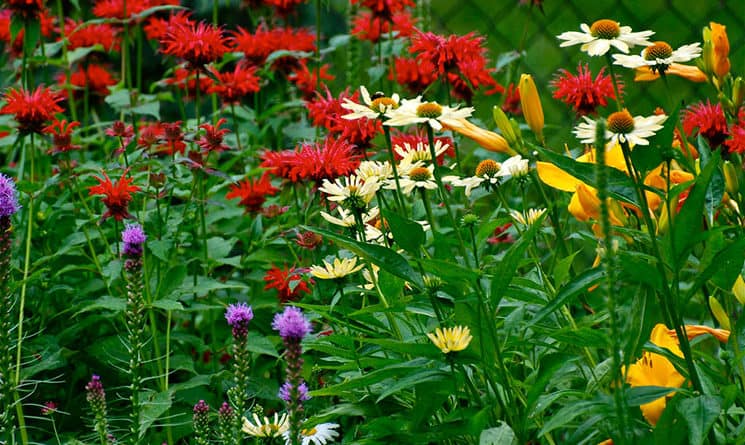Q: What are your suggestions for useful perennials in our hardiness zone (5)?
A: There is an overwhelming amount of plant material to choose from with more being introduced every year. For New England gardeners, the most rewarding to plant in our harsh climate is the category of herbaceous perennials, plants that die back down to the ground in winter to reemerge fresh from the base the following spring.
Here we offer a handy list of my favorite perennials to use, based on their ideal growing conditions so the right plant can thrive in the right place with less effort.
Pairing perennials perfectly
Perennials work well together when grouped by similar sun and soil needs, creating less work for you and less waste when watering. Once you have identified the sun exposure and soil conditions that you have in your garden, this list can be implemented and you have only to pick flowers and foliage that appeal to you. These collections provide both synchronized blooms with appeal based on their color scheme, as well as staggered seasonal interest throughout the growing year.
To help you decide on their placement, we have indicated height expectations by abbreviating Back of the border (B), Middle of the border (M) or Front of the border (F).
Sunny selections for moist soil
This patriotic planting includes spring, summer, and fall flowers in red, white, and blue:
Monarda Bee Balm “Gardenview Scarlet” (B), Eupatorium Joe Pye Weed “Pink Frost” (B), Anemone Windflower “Honorine Jobert” (B), Gentiana “True Blue” (M), Polemonium Jacob’s Ladder “Stairway to Heaven” (M), and Astilbe Ostrich Fern “Fanal” (F)
Sunny selections for sandy soil
The springtime bloom of the False Indigo and Icelandic Poppy is eclipsed in the summer to fall by Russian Sage, Coneflower, and Stonecrop in a complimentary color palette of mostly blue and orange:
Baptisia False Indigo “Grape Taffy” (B), Perovskia Russian Sage “Little Spire” (B), Echinacea Coneflower “Cheyenne Spirit” (M), Papaver Icelandic Poppy “Champagne Bubbles” (F), and Sedum Cauticola Stonecrop “Likadense” (F)
A primary color palette keeps this grouping classic:
Echinops Sea Holly “Big Blue” (B), Heliopsis False Sunflower “Loraine Sunshine” (M), and Dianthus Pinks “Vampire” (F)
Vibrant red flowers and foliage create a bold advancing color scheme:
Achillea Yarrow “Sirensong Laura” (M), Verbascum Mullein “Lavender Lass” (M), Pulsatilla Pasque Flower “Rote Glocke” (M), and Euphorbia Cushion Spurge “Bonfire” (F)
Shady selections for sandy soil
Another Patriotic planting that has rugged summer characters includes Cinquefoil and Harebell taking the stage after their spring counterparts Bleeding Heart and Columbine fade away:
Aconitum Fischeri Monkshood (B), Asclepias Swamp Milkweed “Cinderella” (B), Cimicifuga Snakeroot “Brunette” (B), Aquilegia Columbine “Cardinal” (M), Campanula Scotch Harebell “Thumbell Blue” (M), Brunnera Siberian Bugloss “Jack Frost” (F), and Ceratostigma Leadwort (F)
All varieties have been picked for their long bloom time and low-maintenance good nature. Some are additionally native, which means they are adaptable but non-invasive. New and improved selections are showcased, as well as tried and true but underused heirlooms. Each collection provides prime pollinator support with seedheads for birds and pollen for butterflies and bees.
Color has more impact when planted in groups of at least three to nine of the same variety. Odd numbers in waves help your eye move throughout the garden, while also attracting butterflies more effectively as a solid mass.
Happy planting, and be sure to make time to sit back and enjoy your efforts!
This article is a result of the hard work and dedication of Master Gardener volunteers working at the UNH Cooperative Extension Education Center. The center answers questions about gardening and more at answers@unh.edu, or by calling 877-398-4769, Monday through Friday, between 9 a.m. and 2 p.m.

